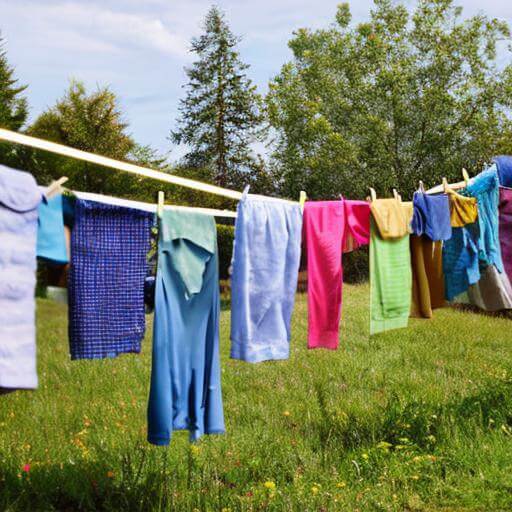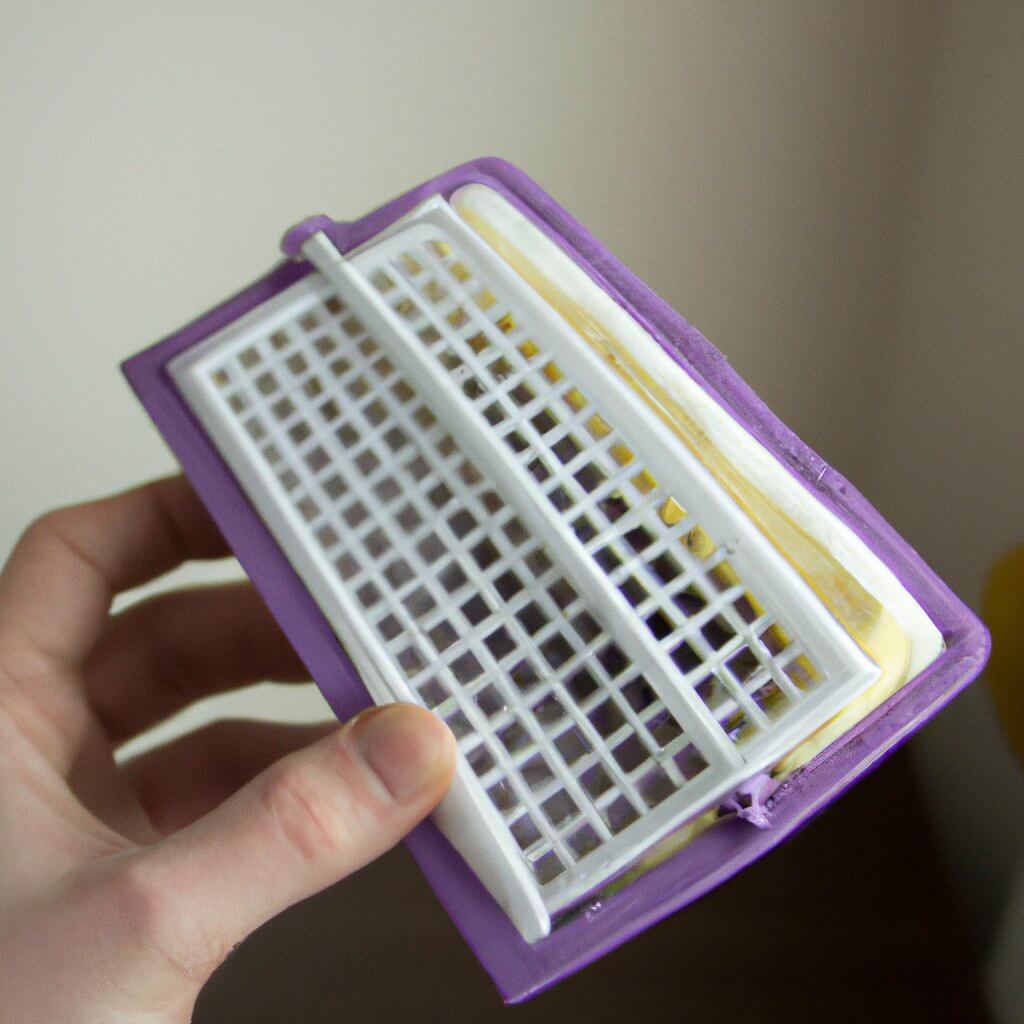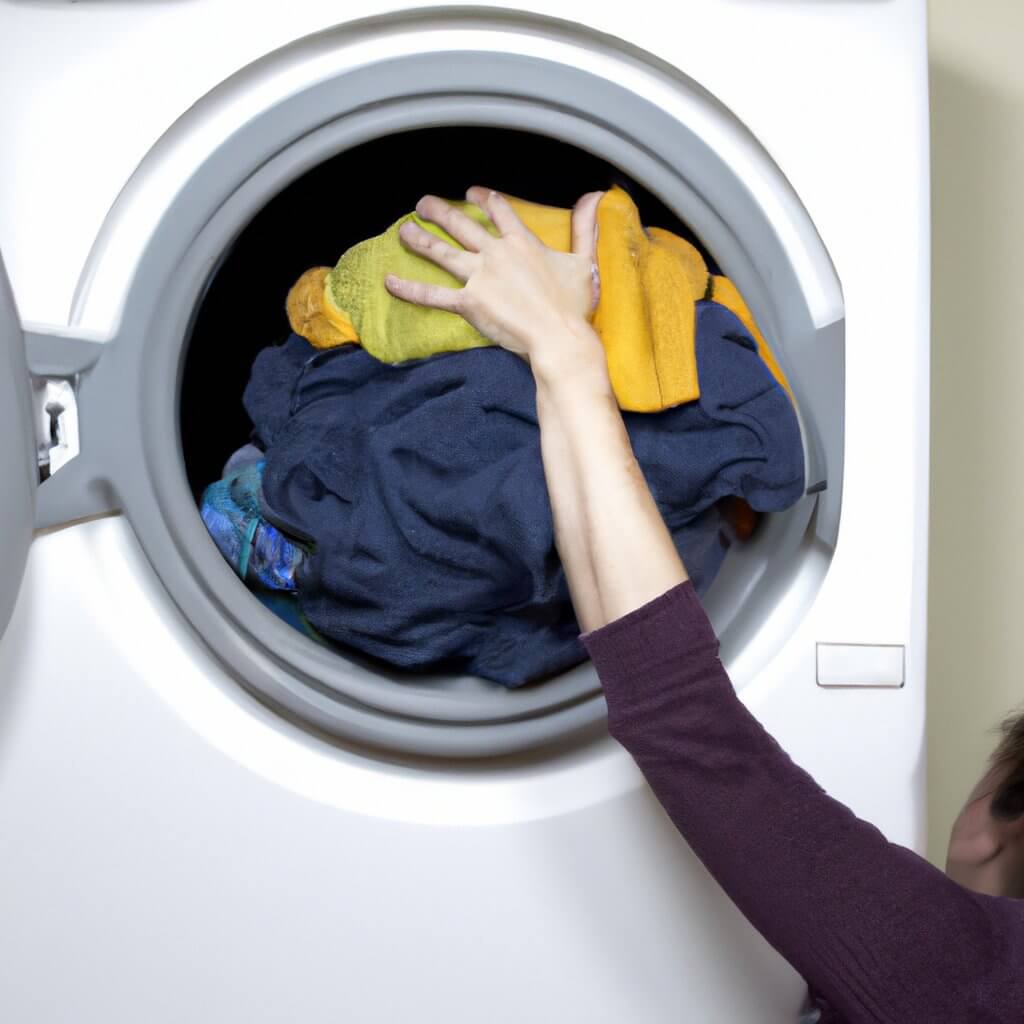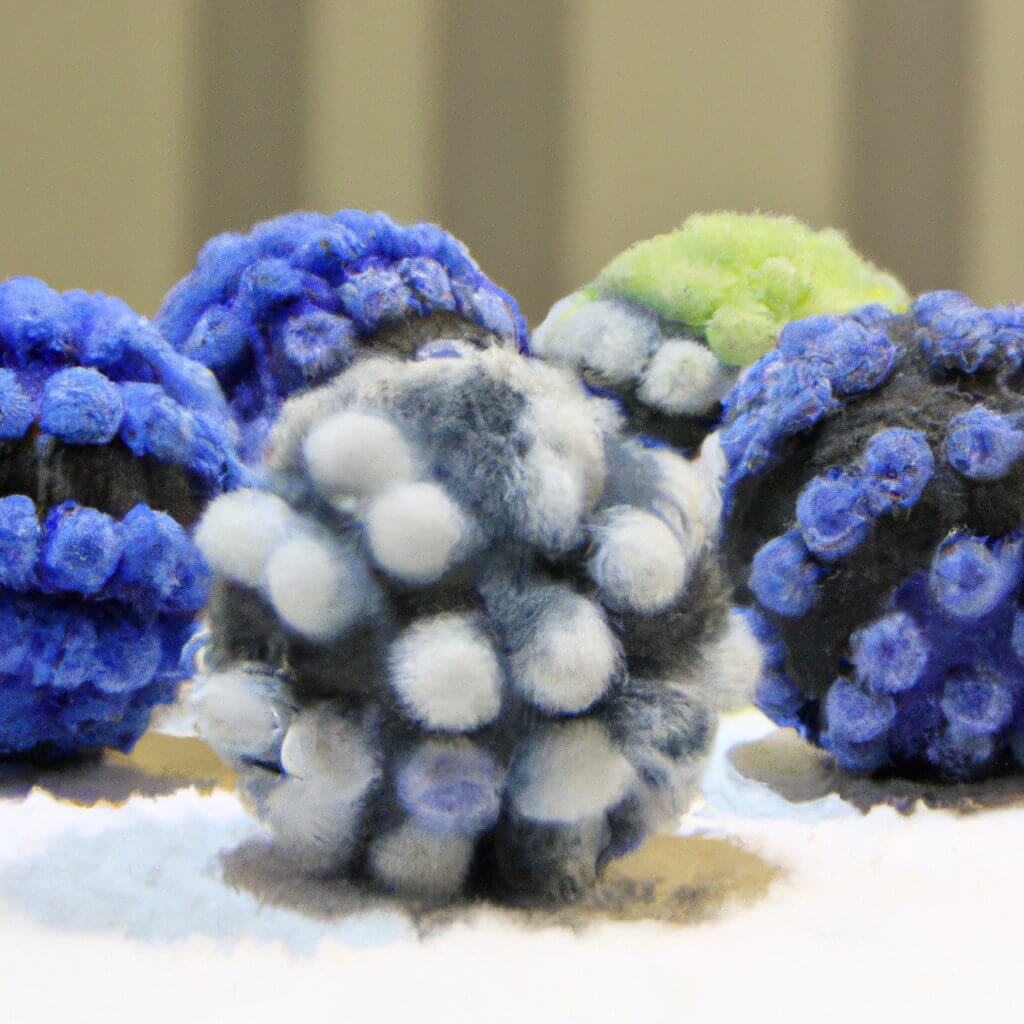- Home
- Why Is My Electricity Bill So High
- How to Save Energy Drying Clothes
how to save energy drying clothes?
When it comes to laundry, drying clothes can use up to 70% of the energy required for the entire process. Therefore, taking the time to properly save energy when drying clothes is essential in order to save on energy costs and help reduce your environmental footprint.
In this blog post, we will discuss some tips and tricks that can help you conserve energy when drying clothes, from using a clothesline to choosing high-efficiency dryers. We'll also explain the advantages of each option and discuss some additional strategies such as using natural sunlight, whereby you can save even more energy when drying clothes.
With a clear understanding of the techniques available, you can make informed decisions about the best way to dry your clothes in an efficient and environmentally friendly manner.
1. Use a clothes line to dry clothes

A clothes line is a great way to save energy and money when drying clothes. It is an easy, eco-friendly and inexpensive way to get your laundry dry.
Not only will you save energy, but you can also save money by avoiding the use of a dryer. When using a clothes line, you don’t need to worry about your clothes shrinking or becoming damaged from the heat of a dryer. You also don’t need to purchase dryer sheets or fabric softeners, which can add to the cost of drying your clothes.
You can hang your damp clothes on the line and let the sun and wind do the work for you. In addition to saving energy and money, using a clothes line also helps reduce your carbon footprint. You can also feel good knowing that you’re reducing the amount of electricity you’re using. If you need to dry clothes quickly, you can always use a clothes line and hang them up one after another.
They don’t emit any harmful emissions, and the sun’s natural energy helps to dry your clothes quickly and naturally. The sunshine also has the added benefit of helping to naturally whiten and freshen your clothing.
By using a clothes line, you are able to reduce your energy consumption, saving money on electricity bills and helping to reduce your carbon footprint. It’s also a great way to save energy as you don’t need to use a dryer, which also reduces the amount of energy used when drying your clothes.
More on why is my electricity bill so high?
2. Avoid over-drying clothes in the dryer
When it comes to saving energy in the laundry room, avoiding over-drying your clothes in the dryer is a great place to start. To avoid over-drying your clothes, pay attention to the settings on your dryer and use the shortest cycle necessary.
Most modern dryers have sensors that detect when the clothes are dry, so that the dryer will automatically shut off when the garments are done. If you are using a traditional dryer, you can check the clothes periodically to avoid over-drying them.
If you are worried about forgetting to check the dryer, you can set a timer to remind you to check the clothes. Another way to avoid over-drying your clothes is to hang them outside on a clothesline or drying rack. This method doesn't require any energy and can leave your clothes with a fresh outdoor scent. If you are using a dryer, try to use the lowest temperature setting.
If you are using a gas dryer, it is important to check the connections to make sure that they are secure. A loose connection can cause the dryer to use more energy than necessary.
3. Clean the lint filter regularly

Homeowners should be aware that regularly cleaning the lint filter in their dryer is a requirement to save on electricity.
Many people don't realize that a clogged lint filter reduces the air circulation in the dryer, meaning the appliance has to run for a longer period of time in order to dry clothes. This extra time will increase the amount of electricity being consumed and consequently, the electric bill.
To prevent this from happening, it is important to clean the lint filter after every load of laundry. This process only takes a few seconds, but it can make a significant difference in energy costs. It is also important to check the back of the dryer where the exhaust hose is located.
If there is a build-up of lint, it is important to vacuum it out to ensure that the air is properly venting outside the home. By following these simple steps, homeowners can save on electricity while still getting their clothes dry.
Additionally, make sure to clean the area around the lint filter so that lint and other debris don't accumulate and cause problems. Lastly, regularly check the power cords and wires for any damage or wear that could cause the dryer to use more electricity.
By making sure to clean the lint filter regularly and check the exhaust duct and vent, you can save on electricity and keep your dryer running efficiently
4. Select the appropriate drying cycle for each load
Doing laundry can be a daunting task, but it doesn't have to be! To save on electricity, it's important to select the appropriate drying cycle for each load. For delicate items, such as lingerie and wool garments, use the lowest heat setting or a no-heat setting.
Larger items, such as towels, blankets, and jeans, should be dried on the normal cycle. If drying multiple loads at once, try to avoid overloading the drum, which can result in clothes not drying properly. It's also a good idea to clean the lint filter and check the venting system to ensure air can move freely, resulting in efficient drying.
Before deciding on a particular cycle, it is important to read the clothing labels to find out the care instructions. If the instructions say "tumble dry low" or "tumble dry delicate", then a lower temperature and shorter cycle should be selected. Heavy items such as jeans and towels should be dried on a heavier-duty cycle.
For items that need to be air-dried or hang-dried, it is best to select the "air dry" or "no heat" option. When drying a full load of clothes, it is important to turn off the dryer early if the items are already dry. It is also important to clean the lint filter after every load, as this can improve the efficiency of the dryer and help to save on electricity.
If you're in a rush, you can use the high heat cycle, but be aware that this can cause clothes to shrink. To save energy and reduce wear and tear on clothes, use the right drying cycle for each load. This simple step can have a big impact on your electricity bills, while also helping your clothes last longer.
5. Use cold water for washing and rinsing clothes
With the rising cost of electricity, it is important to look for ways to save energy and money. One way to do this is by using cold water for washing and rinsing clothes. Cold water is just as effective as hot water when it comes to cleaning your clothes, and it can save a lot of energy and money in the long run.
Hot water is not necessary for most loads of laundry, and it only adds unnecessary cost and energy use. When using a washing machine, always select the coldest water setting available and use cold water for both the washing and rinsing cycle.
Additionally, use a cold water detergent in order to get the most out of the cold water and to help protect the fabrics. This will help to reduce wear and tear on the clothes and will help keep them looking their best. By using cold water for washing and rinsing clothes, you can save on electricity and help the environment at the same time.
Cold water can be just as effective in removing dirt and stains, and it is more energy efficient. It is especially important to use cold water for delicate items, such as silks, wool, and other delicate fabrics, as hot water can damage them and cause them to shrink. Cold water can also help to preserve the colors of your clothes better than hot water, which can cause colors to fade over time
6. Utilize the natural sunlight and air to dry clothes
It is becoming increasingly important to minimize energy consumption, both for our financial benefit and the benefit of the environment. One simple way to reduce energy consumption is to utilize the natural sunlight and air to dry clothes.
Rather than running the dryer, which uses a large amount of electricity, hang clothes on a clothesline and let the sun and wind do the work. This is especially effective in sunny, windy climates. Not only will this save on electricity costs, but it can also help to reduce the wear and tear on clothing as the fabric won't be tossed around in the dryer.
There are a few important steps to take when drying clothes with the sun and air. First, you want to make sure the clothes are hung in an area that gets a lot of sunlight and air circulation.
This will help speed up the drying process. Second, you want to make sure the clothes are hung up in the early morning or late afternoon to avoid the hottest parts of the day. Lastly, you want to check the clothes periodically to make sure they are not getting too dry or too damp.
Additionally, some linens, like towels, will dry softer and more absorbent when dried naturally in the sun. To make the most of natural drying, try to hang clothes out on a clear day when there is little to no chance of rain.
7. Reduce the use of a dryer by line-drying clothes
Line-drying clothes is an excellent way to reduce the use of a dryer and save on electricity. The sun and the wind are free, so why not take advantage of them? Line-drying is an age-old way to keep your laundry free of wrinkles and conserve energy.
All you have to do is hang your clothes on a line and wait for the sun and the wind to do their job. You can use a clothesline, a retractable line, or a drying rack. Clothes will dry much faster in the sun, so be sure to put your line in a sunny spot. Additionally, you can find a spot where the wind can help your clothes dry even faster. Drying your clothes in the sun also helps them smell fresher.
Furthermore, line-drying clothes is much gentler on the fabric than machine drying. By line-drying your clothes, you will be saving money on your electric bill and helping the environment by reducing the amount of electricity
8. Avoid overloading the dryer

Overloading a dryer can cause it to work harder and for longer, as it has to dry more clothes than it was designed to handle. This can cause it to consume more energy than necessary, and in the long run will cost you more money. To avoid overloading the dryer, make sure that you don't put too many clothes in at once.
It's best to do multiple smaller loads rather than one large one. Furthermore, make sure that the clothes are not too wet before you put them in the dryer, as this will also reduce the amount of time it needs to run.
After you are done drying your clothes, make sure to unplug the dryer as soon as possible to ensure that you are not wasting electricity. By following these simple steps, you can save money on your electricity bill and reduce your environmental footprint.
Additionally, be sure to clean out the lint filter before and after each use. A clogged lint filter can lead to a decrease in the dryer's efficiency. If you notice your dryer takes longer than usual to dry your clothes, it could be a sign that you need to clean the lint filter. Doing so will also help keep your clothes looking their best. Finally, remember to limit the temperature when using the dryer.
9. Select the correct temperature
It is important to select the correct temperature on your dryer when doing laundry in order to save on electricity. One way to do this is to select the 'low' setting for most items. This setting is usually enough to get your clothes dry, but not so hot that it is wasting electricity.
If you find that you need a higher setting for heavier items, such as towels or jeans, select the 'high' setting instead. Doing this will help you conserve electricity, which will help you save money. Additionally, make sure you don't over-dry your clothes; this too can waste electricity.
If you are unsure of the best temperature to use, you can always consult the manufacturer’s manual or contact the manufacturer directly. When selecting the temperature, make sure to take into account the type of fabric you are drying. For heavier fabrics, a higher temperature may be needed, while lighter fabrics should be dried on a lower setting. Different fabrics may also require a different spin cycle and a different drying time.
If you find that your clothes are not completely dry after the cycle is finished, you can try a lower setting or shorten the drying time. This will help you save even more electricity. Finally, make sure that you clean the lint filter after each cycle. This will help your dryer run more efficiently and also save on electricity.
10. Separate clothes into small loads for faster drying times
To get your laundry done quickly and efficiently, separate your clothes into small loads for faster drying times. This will help to ensure that the dryer is not overloaded, which can prolong drying times and cause clothes to come out damp or wrinkled.
Furthermore, separating your laundry into small loads allows you to better manage the settings and temperatures of the dryer, so you can avoid shrinking and damaging any delicate fabrics. You can also control the amount of air that enters the dryer and adjust the time needed for each load.
When sorting clothes, you should separate them into light and dark colors, as well as separate fabrics like cotton, linen, and synthetic. It is also important to pay attention to the care labels on each garment, as different materials require different drying temperatures and times.
Once the clothes are sorted, it's important to add the right amount of detergent to the washer and set the washer to the correct cycle for the clothes. After washing, it's important to separate the clothes into small loads for faster drying times. Drying time varies depending on the type of fabric, as well as the size of the load
Additionally, separating your laundry into small loads helps to reduce the amount of time needed to fold and hang the clothes. This will help save you time and energy, and you can even switch between loads more quickly so you can move on to more important tasks.
Finally, separating your laundry into small loads can help to prevent the buildup of lint and other debris, which can clog the dryer's filter or cause it to break down prematurely.
11. Choose the right size washer and dryer
Choosing the right size washer and dryer is a crucial part of making sure you are saving energy. When you buy a washer or dryer that is too large, you will be using more energy than necessary. On the other hand, if you purchase a washer and dryer that are too small, you might find yourself running multiple loads.
This will take more time, and also more energy. Therefore, it is important to do your research and consider the size of the space you have to work with. This will help you choose the right size washer and dryer for your home. Additionally, if you are in the market for a new washer and dryer, look for models that are energy-efficient.
These models are designed to use less energy than standard models. It is also a good idea to look for machines that have features such as speed wash, delay start, and other energy-saving features.
Also, consider the type of washer and dryer you need. If you have a lot of delicate clothing, you may need a washer and dryer that can handle that. In addition, if you have a lot of towels or linens, you may need a larger washer and dryer that can handle bigger loads. When you choose the right size washer and dryer, you will save energy and water.
12. Use the lowest temperature setting on your dryer
Using the lowest temperature setting on your dryer is an easy way to save energy and money. It reduces the wear and tear on your clothes while also decreasing your monthly utility bill. Not only is using the lowest temperature setting more energy efficient, but it is also better for your clothes.
By using the lowest temperature setting, you will be able to extend the life of your clothes and maintain their quality. The low temperature setting decreases the risk of shrinking and fading fabrics. In addition, many fabrics respond better to the low temperature setting because it is less likely to cause damage than a higher setting. It is important to remember that the low temperature setting does not need to be used for all fabrics.
Delicate fabrics such as wool, silk, and some synthetics should be dried at a low temperature. If the fabric label indicates, these items can be air dried instead. Using the lowest temperature setting on your dryer is a great way to save money and energy, as well as protect your clothes from damage.
Additionally, drying at the lowest temperature setting helps to reduce the amount of lint and static that can build up on clothes when dried at a higher temperature. Lastly, using the lowest temperature setting on your dryer will help to save money on your energy bill. By using the lowest temperature setting, you can help to ensure your clothes are dried properly while also reducing your energy costs.
13. Use a moisture-sensing dryer
Using a moisture-sensing dryer is the best way to ensure your laundry comes out perfectly dry without wasting energy. It works by measuring the moisture content in the air inside the drum. When the clothes are dry, the dryer stops automatically, so you don't have to worry about over-drying your laundry.
It also helps conserve energy by using less electricity. Moisture-sensing dryers are also more convenient to use, because they can sense the humidity in the air and adjust their settings accordingly.
This means you can use less heat and still get your clothes perfectly dry. Another great feature of moisture-sensing dryers is that they have sensors that detect when clothes are finished drying and turn off the dryer automatically. This saves you from having to manually turn off the dryer, which helps conserve energy. Moisture-sensing dryers are a great way to save energy and keep your laundry from being over-dried.
The sensors will also help reduce the amount of wear and tear on your clothes by not having them sit in the dryer any longer than they need to. Another great benefit to using a moisture-sensing dryer is that it helps to reduce wrinkling.
It does this by using a moisture-sensitive cycle that stops when your clothes reach the desired level of dryness. This also helps to reduce static cling, so your clothes come out of the dryer feeling soft and looking great. Not only does using a moisture-sensing dryer help to make
14. Hang dry clothes whenever possible
When it comes to doing laundry, many people don’t think about how their methods of drying clothes can affect the environment. Whenever possible, it is important to hang dry clothes instead of using a dryer. Not only does this conserve energy, but it also reduces your carbon footprint and helps to protect the environment.
Hanging clothes to dry is a simple and effective way to reduce your energy consumption. Clothes hung outdoors in the sunshine will take less time to dry than clothes hung indoors and the sun’s UV rays can help to naturally disinfect and deodorize the garments.
Not to mention, the fresh scent of clothes dried outdoors can be quite pleasant. While it takes more time to hang clothes to dry than to use a dryer, the effort is worth it for the environmental benefits. The best way to hang dry clothes is to use a clothesline, though a clothes rack or shower rod can also be used. It’s important to make sure your clothesline
Hanging your clothes to dry is a great way to save energy and money. Whenever possible, hang dry your clothes instead of using a dryer. Clothes hung to dry will last longer, have a better shape, and be softer.
Plus, they will be free of the chemical residues found in dryer lint. This is especially important for people with allergies, asthma, or sensitive skin. Hanging your clothes to dry also conserves energy.
The energy required to run a clothes dryer for one load of laundry is about five times more than the energy needed to hang dry the same load. When the sun is out, you can even hang your clothes outdoors for an added energy savings.
You can hang dry your clothes in any convenient place such as a bathroom, laundry room, basement, or even a balcony. But be sure to choose a spot where the clothes will be secure and won't blow away. With a few clothespins, a hanger, and a line, you
15. Use dryer balls or tennis balls to reduce drying time

Using dryer balls or tennis balls to reduce drying time can be a great way to get your laundry done faster. Dryer balls are specially designed balls that are placed in the dryer to help reduce drying time.
They bounce around and create space between the clothes, allowing hot air to move more freely and dry clothes faster. The balls also absorb moisture, so the dryer doesn't need to run as long. Tennis balls can also be used for this purpose.
These balls create the same space between the clothes, allowing hot air to circulate and dry things faster. They also reduce static cling in the dryer, making it easier for you to put away your clothes.
If you want to save time on laundry, using dryer balls or tennis balls to reduce drying time is a great way to do it. Not only will you save time, but you'll also be able to save energy and money in the long run.
You can even add a few drops of your favorite essential oil to the balls to give your laundry a pleasant scent. Using dryer balls or tennis balls can help you save time, energy, and money. Plus, it's a simple and affordable way to make your laundry day a little more efficient.
Conclusion
Overall, the tips provided in this post can help you reduce your energy consumption when drying clothes. By making sure to clean the lint filter on a regular basis, using a drying rack or an outdoor clothes line when possible, and setting your dryer on the appropriate setting for the type of clothes you're drying, you can save energy and money while helping the environment. With a few simple changes, you can make a great contribution to energy and cost savings.